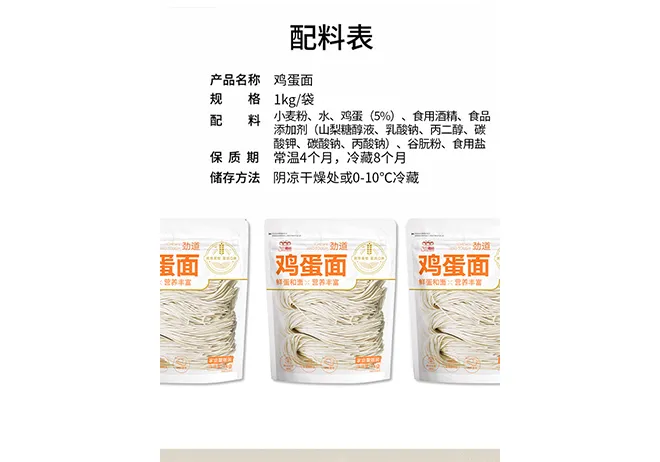fresh pasta types
The Delightful World of Fresh Pasta Types
Pasta is a beloved staple in many cultures, and while dried pasta is widely consumed around the globe, fresh pasta offers a unique texture and flavor that many aficionados swear by. The process of making fresh pasta has been an Italian tradition for centuries, and it forms the backbone of countless delicious dishes. Let’s explore some of the different types of fresh pasta, the techniques used to create them, and the culinary delights that follow.
Understanding Fresh Pasta
Fresh pasta is made from simple ingredients flour, eggs, and sometimes water or oil. The dough is kneaded until smooth, rolled out thinly, and then cut into various shapes. The key distinction between fresh and dried pasta lies in their texture; fresh pasta is often silkier and more delicate, providing a gourmet experience that dried pasta simply cannot match. Fresh pasta also cooks faster, usually taking only two to four minutes to become al dente.
Common Types of Fresh Pasta
1. Tagliatelle Originating from the Emilia-Romagna region, tagliatelle is a long, flat ribbon pasta that is typically about half an inch wide. It’s perfect for rich sauces like Bolognese or creamy Alfredo, as its flat surface helps to hold onto sauces beautifully.
2. Fettuccine Similar to tagliatelle, fettuccine is also a flat, ribbon-shaped pasta but is slightly thicker. It is well-known for its use in the classic dish Fettuccine Alfredo. The texture of fettuccine makes it excellent for heavier, creamy sauces.
3. Pappardelle Even wider than tagliatelle and fettuccine, pappardelle is a broad, flat pasta that measures nearly an inch across. This pasta hails from Tuscany and pairs splendidly with hearty sauces, particularly those made with game meats or mushrooms, where its substantial width can balance robust flavors.
4. Ravioli This type of fresh pasta is made by enveloping filling—usually a mixture of cheese, meat, or vegetables—between two sheets of dough. Ravioli can be served in broth, with a sauce, or even baked. Variations of ravioli are endless, ranging from traditional ricotta and spinach to innovative fillings like butternut squash or lobster.
fresh pasta types

5. Tortellini Often mistaken for ravioli, tortellini are small, ring-shaped pasta usually filled with a mixture of meat or cheese. Originating from the Emilia-Romagna region, they are traditionally served in broth or with a rich cream sauce.
6. Lasagna Unlike other fresh pasta types, lasagna sheets are wide, flat sheets typically used in layered baked dishes. Fresh lasagna offers a tender texture that unfolds beautifully when baked with layers of sauce, cheese, and various fillings.
7. Gnocchi While technically a dumpling rather than pasta, fresh gnocchi is often made with potatoes, flour, and eggs. These little morsels can be boiled or pan-fried to create a crispy exterior while remaining soft inside. They pair well with a variety of sauces, from a subtle brown butter to a hearty tomato sauce.
Techniques for Making Fresh Pasta
Making fresh pasta is an art that requires practice and patience. Start by making a mound of flour, creating a well in the center for your eggs. Gradually incorporate the flour into the eggs until a dough forms. Knead the dough until it’s smooth and elastic, then allow it to rest. Once rested, you can roll it out using a pasta machine or a rolling pin, cutting it into your desired shapes.
Cooking fresh pasta is straightforward. Boil a pot of salted water and drop in your pasta. Once they float to the surface, they are generally ready to be drained and paired with your favorite sauce.
Conclusion
Fresh pasta represents more than just a dish; it embodies a culinary tradition and a celebration of flavor and texture. Whether you’re enjoying a comforting plate of fettuccine Alfredo or indulging in homemade ravioli, fresh pasta offers something special with every bite. The diverse types and versatility of fresh pasta make it a treasured component in kitchens worldwide, allowing for endless creativity and enjoyment in the dining experience.
-
Unleash Your Inner Chef with Delectable Italian Pasta CreationsNewsAug.01,2025
-
Savor Health and Flavor: Irresistible Soba Noodles for Sale Await!NewsAug.01,2025
-
Nourish Your Body with Premium Organic Ramen - A Culinary Delight AwaitsNewsAug.01,2025
-
Elevate Your Dishes with Our Exquisite Kinds of Egg NoodlesNewsAug.01,2025
-
Dive into Flavorful Convenience with Our Ramen OfferingsNewsAug.01,2025
-
Discover Exquisite Types of Naengmyeon and Chilled Soba NoodlesNewsAug.01,2025
-
Is Whole Wheat Pasta Healthy?NewsMay.30,2025
Browse qua the following product new the we

















































































































